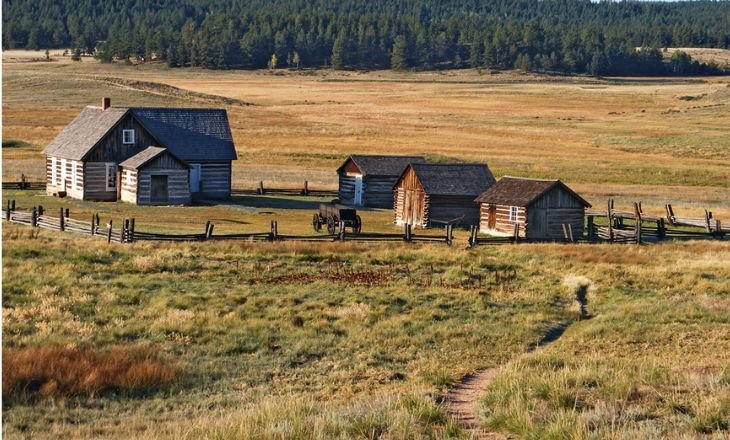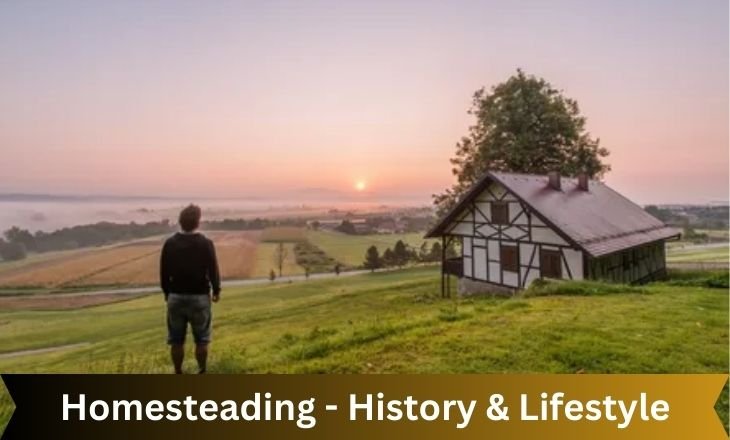Homesteading is a challenging and romantic way of life that shows independence and strength. It means making a living from the land and has been significant since westward expansion.
The homestead includes open prairies with cabins, active farms with crops, and families working together to achieve the American dream.
Homesteading is becoming popular again as people want to be closer to nature and make their lives more straightforward and sustainable. It mixes simplicity and creativity, tradition and innovation, and freedom in working the land under the open sky.
Historical Policy
The Homestead Act of 1862 gave land to settlers who would farm it. This helped expand the West and farming. However, it caused problems for Native Americans by taking their land. The act also changed the American West and influenced future policies.
The Act shows the struggle between economic growth and Native American rights. Looking at past policies like this helps us understand current issues in society.
What Is Homesteading
Homesteading is a lifestyle choice for many who want to live closer to nature and be self-sufficient. It includes growing food, raising animals, and making your energy. This way of living helps individuals take charge of their lives and rely less on outside systems.

“The Difficult Life Challenges”
Life challenges are unexpected storms that test our strength. They make us face our fears and dig deep into our values. These tough times help us find courage and determination within ourselves. Embracing challenges can change us, helping us grow and learn more about ourselves.
We can redefine our priorities, abandon old beliefs, and become stronger. Even though the journey may be arduous, facing challenges can lead us to wisdom and understanding.
What Are Financial Challenges
Homesteaders face financial challenges that require creativity and resourcefulness. One major challenge is the uncertain income from farming, which can vary due to changing crop yields, livestock sales, and seasonal demands.
Starting a homestead requires a significant upfront investment in land, equipment, and sustainable practices. Managing these expenses while preparing for the future can be difficult.
Tiny Homesteading Homes
Tiny homestead homes are small but charming and efficient. Many homesteaders choose these compact spaces to save money and live sustainably. These homes allow people to live simply and be closer to nature. They use solar power and rainwater systems for self-sufficiency.
These small homes encourage mindfulness and intentionality in daily life.
Homesteading Programs
Homestead programs help people learn skills like gardening and animal care. Participants can live more independently by growing their food and resources. This gives them a sense of control and appreciation for the hard work of maintaining a homestead.
Homestead For Beginners
Starting a homestead as a beginner may seem hard, but it can be rewarding if you are willing to face challenges. It’s best to start small and grow slowly as you learn and gain confidence. This allows you to focus on each part of your homestead and give it the attention it needs.
When you begin, focus on sustainability. For successful gardening in the long term, concentrate on improving soil quality by composting, rotating crops, and using natural fertilizers.
Homesteading Books
Homestead books are helpful guides for those who want to live independently. They talk about gardening and caring for animals and share stories about the challenges and rewards of homesteading. These books help readers feel connected to the land and enjoy the simple pleasures of rural life.
They describe farm life and teach traditional skills like canning, offering a peek into a slower, more intentional way of living that many find appealing as a break from the fast pace of modern life.
Free Land For Homesteading
Imagine the freedom of building your dream home on acres of untouched land, all for free. Starting a new life on open terrain with no strings attached is an exciting opportunity for those seeking a more straightforward way of life.
This practice, once common in US history, is returning as more states offer free land programs to attract settlers and revitalize rural communities.
Homesteading allows people to disconnect from modern society and reconnect with nature, creating a sustainable lifestyle that values self-sufficiency and resourcefulness. This journey requires dedication, hard work, and a deep appreciation for the land.
Women Homesteaders
Women played a crucial role in shaping the American frontier through homesteading. They showed resilience and resourcefulness in establishing new lives on the land. While men were usually seen as homesteaders, women managed the household, cared for livestock, grew crops, and supported their families.
They defied societal norms by taking on tough tasks and mastering farming skills. Women homesteaders were innovative, adapting to rural challenges with creativity and determination.

Conclusion
Homesteading is an old way of life that many people still like today. Early settlers faced challenges and successes that taught us about being tough and clever to live off the land.
Taking care of yourself, being eco-friendly, and working together as part of homesteading can teach us how to live better with the earth.
Whether you want to start homesteading or find it interesting, one thing is clear – the homesteading spirit shows how people and nature are connected. Try this way of life, learn from the past, and move towards living more thoughtfully.
Frequently Asked Question
What Was Daily Life Like In 1850?
Daily activities 1850 included farming, household chores, attending church services, and socializing with neighbors.
When Was The Homesteader Made?
The Homesteader (1919) is a silent movie by Oscar Micheaux, a Black writer and filmmaker. The film is based on his novel about his own life.

